Comet SWAN and it's Complex Tail
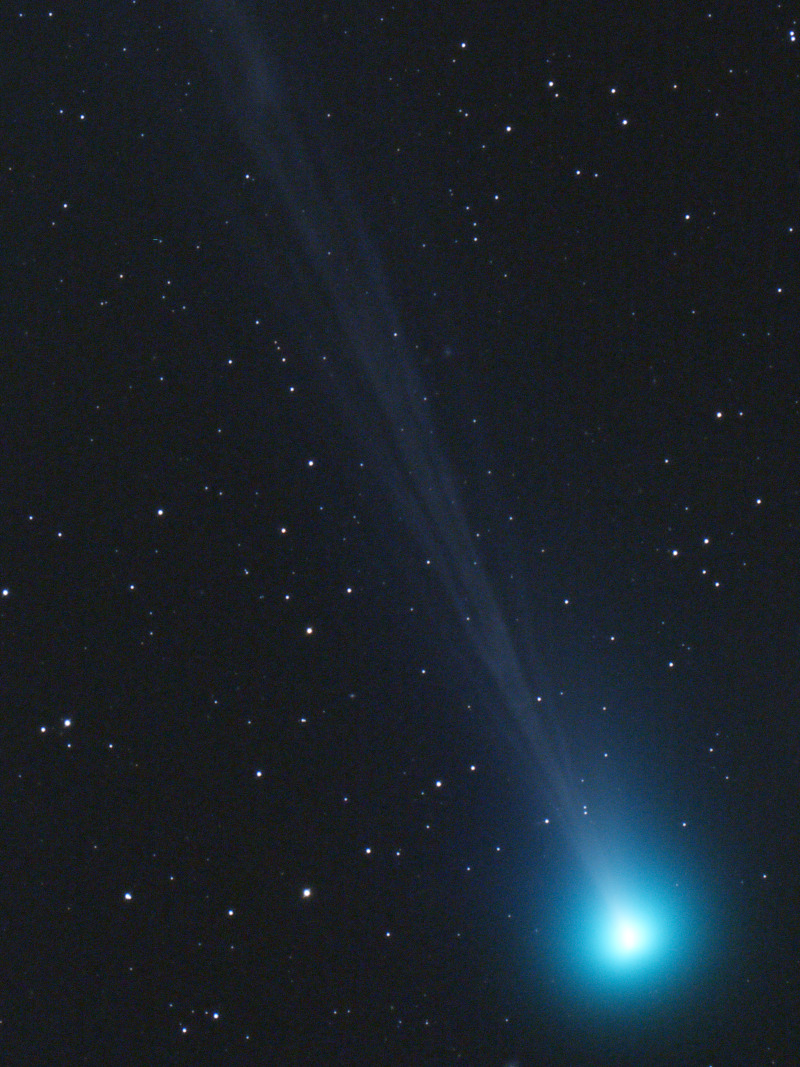
Comet C/2020 F8 (SWAN) imaged by the Author on May 4, 2020. This was taken using a 36cm Telescope and QHY183c camera riding on a Skywatcher EQ8-RH mount
Two weeks ago I wrote about the disintegrating Comet ATLAS here. By good fortunate another interesting comet - C/2020 F8 (SWAN) - made an appearance around the same time and was well enough placed that I could follow it for a few weeks from my own home observatory. For a few mornings in early May the comet displayed some impressive and dynamic tail structures as can be seen in the accompanying images and animations.
Incidentally, Comet C/2020 F8 (SWAN), was actually found by citizen scientist Michael Mattiazzo an amateur astronomer who hails from Swanhill, Victoria, Australia. Michael found the comet in data posted online from the Solar Wind ANisotropy (SWAN) instrument aboard the SOHO solar satellite. I posted a link to the instrument homepage below.
May 1, 2020
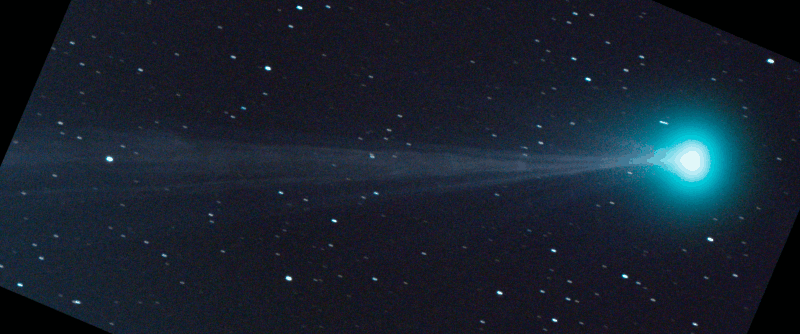
Complex activity within the comet's tail is visible here in this 60 minute time-lapse on May 1, 2020. The author used used a 36cm Telescope and QHY183c camera riding on a Skywatcher EQ8-RH mount
Comet SWAN showed primarily an Ion (or Plasma) tail which consists - as its name suggest - of ions emitted from the comet which then strongly interact with the solar wind. Disturbances in the solar wind cause complex structures to occur in the ion tail that change in a matter of minutes. The bluish tint of the tail is the result of ionized Carbon Monoxide (CO+). Interestingly, my images show a significant red component to the ion tail, which could be either be from the red filter of the camera not fully blocking the blue portion of the spectrum or perhaps ionized water (H2O+) which has some emission in the far red of the visual spectrum. I've added a couple of links/references at the end for anyone interested in reading more about comet ion tails.
The image above was a time-lapse of just over an hour from 18:15 to 19:20 hrs UT on May 1, 2020. At the time the comet was 108 million km away, and because our line of sight was almost perpendicular to the tail we can estimate the visible tail length in this image as almost 2 million km. What you will note is structures in the tail show evidence of acceleration as the move further from the head of the comet, with the detail near the left edge traversing at least 200,000km during the time lapse (i.e 200,000 kph!).
To the eye, the comet was relatively unimpressive, looking like a small fuzzy star in my 10x42 binoculars with a faint hint of tail pointing upwards. A casual observer would not have likely recognized it as comet unless they had very dark skies. However, even with a wide angle lens my Olympus camera was able to capture the following image of the comet and my backyard. The comet is in the middle of the yellow box.
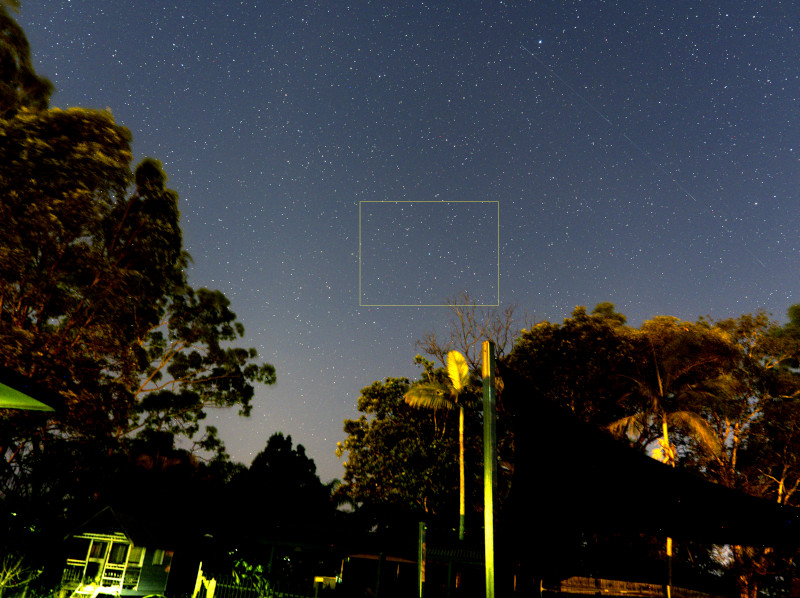
Comet SWAN, May 1, 2020. Camera used: Olympus OMD EM5 mk2 and 14mm f2.8 lens
Did you find it? Here it is the boxed view enlarged, which you might have a better chance of seeing it.

However at the same time, using my other Olympus camera and short telephoto lens, the tail was easily captured:
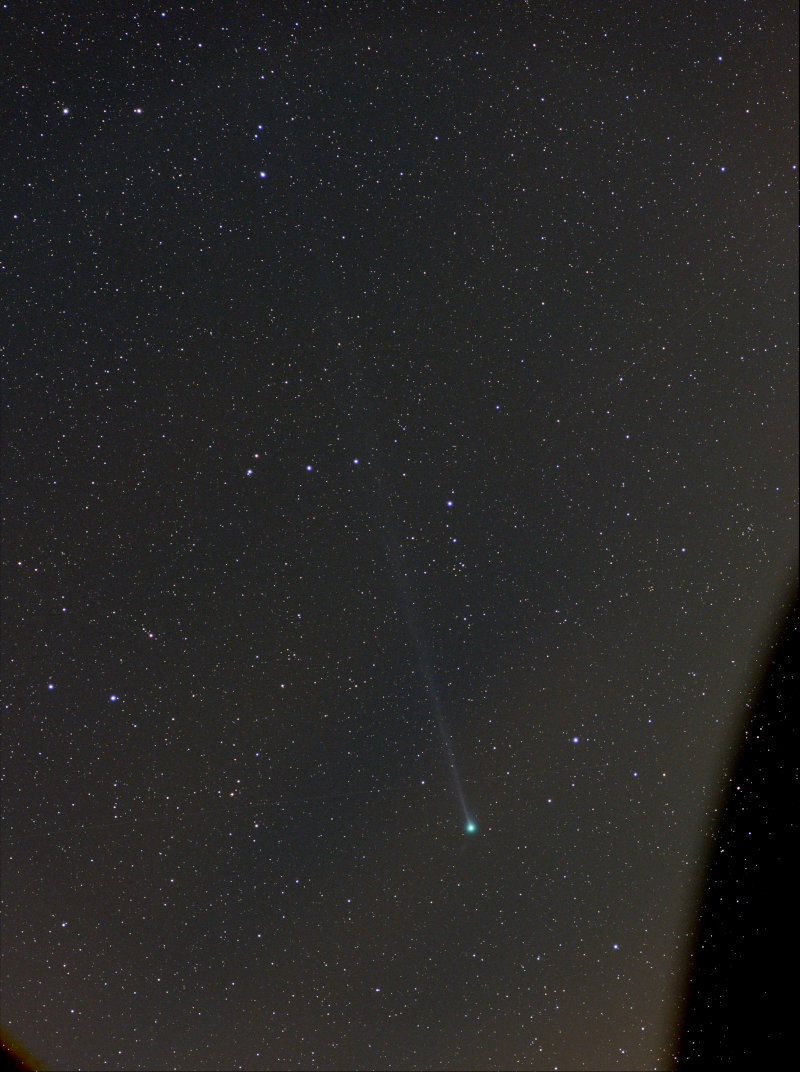
Comet SWAN, May 1, 2020. Camera used: Olympus OMD EM1 mk2 and 75mm f2.5 lens. The side of the telescope is visible as the shadow on the right.
May 3, 2020
Two days later, another clear morning and here is what I was able to capture. The tail seemed a lot more contorted this morning,
Here is another timelapse, for a shorter time of 47 minutes from 18:26 to 19:13 hrs UT on May 1, 2020. At the time the comet was then 101 million km away, so the visible length of tail in this image is slightly less than 2 million km.
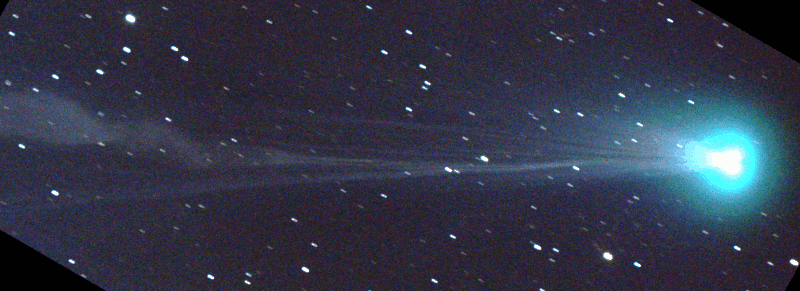
Complex activity within the comet's tail is visible here in this 47 minute time-lapse on May 3, 2020. The author used used a 36cm Telescope and QHY183c camera riding on a Skywatcher EQ8-RH mount
Below is a much wider view at the same time using a 75mm focal length telephoto lens on my Olympus. Notice the kink in the tail half way along which happens about 10 million km from the head of the comet in real times (that's 10 times the diameter of the sun and 20 times the distance of the earth to the moon!).
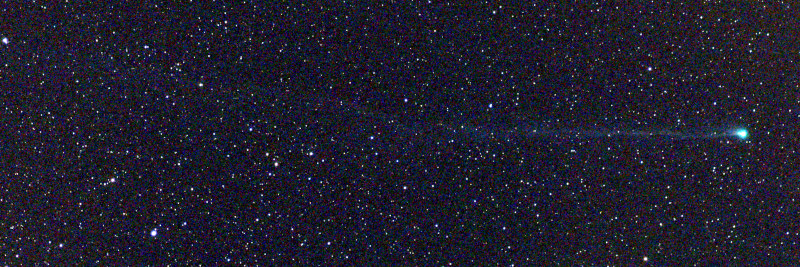
Comet SWAN, May 3, 2020. Camera used: Olympus OMD EM1 mk2 and 75mm f2.5 lens. Single 60 second exposure stretched
Future Prospects for Comet SWAN
Like the previous comet, Comet ATLAS, this one also decided to disintegrate. After the above images were taken the comet began a steady fade and at the time of writing only a faint pencil shaped cloud of dust remain's of the comet. Check out this recent image by Michael Jaeger from Austria here
Further Reading
John Brandt's "Observations and Dynamics of Plasma tails". I found a link here
Simulation of Plasma Interaction between Comet 67P/C-G and the Solar Wind around Perihelion
Congratulations @terrylovejoy! You have completed the following achievement on the Hive blockchain and have been rewarded with new badge(s) :
You can view your badges on your board And compare to others on the Ranking
If you no longer want to receive notifications, reply to this comment with the word
STOPDo not miss the last post from @hivebuzz:
Support the HiveBuzz project. Vote for our proposal!